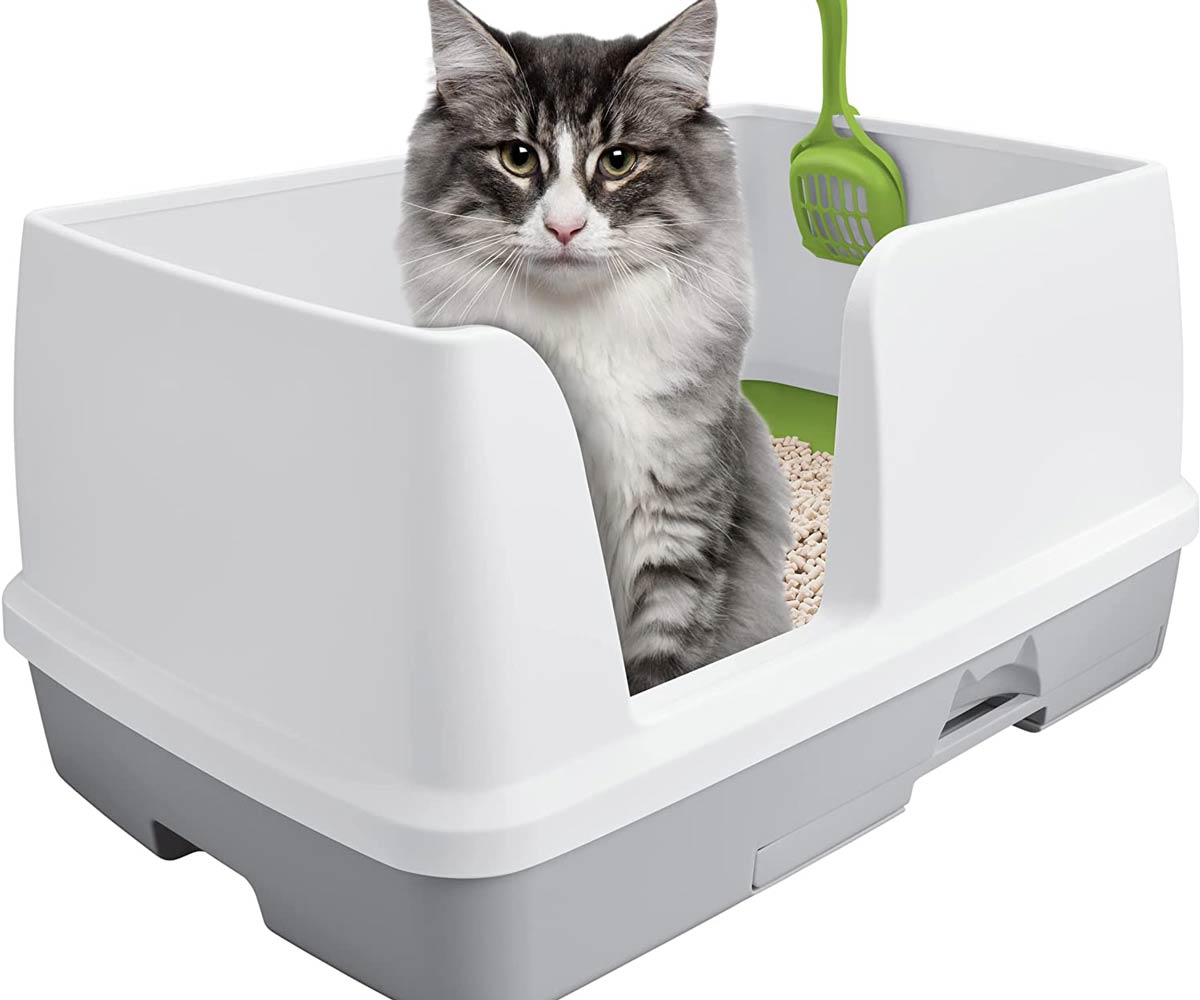As a cat owner, ensuring that your feline friend is properly trained in using the litter box is essential for maintaining a clean & hygienic home and ensuring the best health & longer lifespan for your cats.
Cat litter training may seem like a daunting task, but with the right approach, patience, and consistency, you can successfully train your cat to use a litter box for its bathroom needs.
Whether you have a kitten or an adult cat, here are 5 essential steps to follow for successful litter box training.
 Source: Amazon
Source: Amazon
5 Steps for Training Your Cat or Kitten to Use the Litter Box
Step 1: Choose the Right Litter Box and Location
It’s important to select a litter box that is large enough for your cat to comfortably move around in and has low sides for easy access.
Avoid covered litter boxes initially, as some cats may feel trapped or intimidated by them.
Additionally, consider the material of the litter box – plastic is a common and affordable option, but there are also litter boxes made of more durable materials like metal or ceramic.
The size of the litter box is also important to factor to consider. The box should be large enough for your cats to easily turn around and dig in the litter without feeling cramped. Cats prefer a litter box that allows them to comfortably move and assume their natural digging and burying behaviors.
It’s also essential to consider the location of the litter box. Cats are private creatures and prefer to use the litter box in a quiet and secluded area. Avoid placing the litter box in high-traffic areas or noisy spots in your home, as this may deter your cat from using it consistently. Additionally, keep the litter box away from your cat’s food and water bowls, as cats prefer separate areas for different activities.
Providing an appropriately sized litter box in a suitable location will help your cat feel more comfortable and confident using it for their litter training.
Step 2: Use the Right Type of Litter
The type of litter you use is crucial for successful litter box training. Start by using a basic unscented, clumping litter, as this is the most common type preferred by cats.
If you want to switch to a different type of litter, do it gradually by mixing a small amount of the new litter with the old litter and gradually increasing the amount over time. This will help your cat to adjust to the new litter without feeling stressed or confused.
Step 3: Introduce Your Cat to the Litter Box and Encourage the Use
Once you’ve set up the litter box with the right type of litter in the appropriate location, it’s time to introduce your cat to it. Place your cat in the litter box and gently scratch its paws in the litter to show them what to do. You can also place some of their waste in the litter box to give them the scent cue that this is where they should go.
Step 4: Cleaning the litter box
Cats are naturally clean creatures and are more likely to use a litter box that is kept clean and well-maintained. It’s crucial to keep the litter box clean by scooping out waste at least once a day and replacing the litter entirely every one to two weeks, depending on the number of cats in your household. Cats may avoid using a dirty litter box, and this can lead to accidents outside the box.
Step 5: Be consistent and positive
Consistency and positivity are key when it comes to successfully training your cat (or kitten) to use the litter box. Following some important tips:
Learn Your Cat’s Schedule: Observe your cat’s natural schedule for eating, drinking, and eliminating. Cats typically have regular patterns and prefer to use the litter box after meals or naps. Pay attention to your cat’s cues and try to establish a routine for taking them to the litter box around these times.
Play with Your Cat Near the Box: Encourage your cat to associate the litter box with positive experiences by playing with them near the box. This will help them feel more comfortable and relaxed in that area, and they may be more inclined to use the litter box afterward.
Teach Your Cat What to Do: If your cat shows signs of needing to eliminate, gently place them in the litter box and use their paw to make a scratching motion in the litter. This mimics their natural instinct to bury their waste. Reward and praise your cat when they use the litter box correctly.
Be patient and give your cat time to explore and get comfortable with the litter box. Encourage them to use it by praising them when they use the litter box correctly and providing treats or playtime as a reward. Avoid scolding or punishing your cat if they have accidents outside the litter box, as this can create negative associations with the litter box and hinder their progress.
Conclusion
Cat litter training requires patience, consistency, and positive reinforcement.
By choosing the right litter box and location, introducing your cat to the litter box, encouraging them to use it, and keeping the litter box clean, you can successfully train your cat to develop good habits for using the litter box for their bathroom needs.





